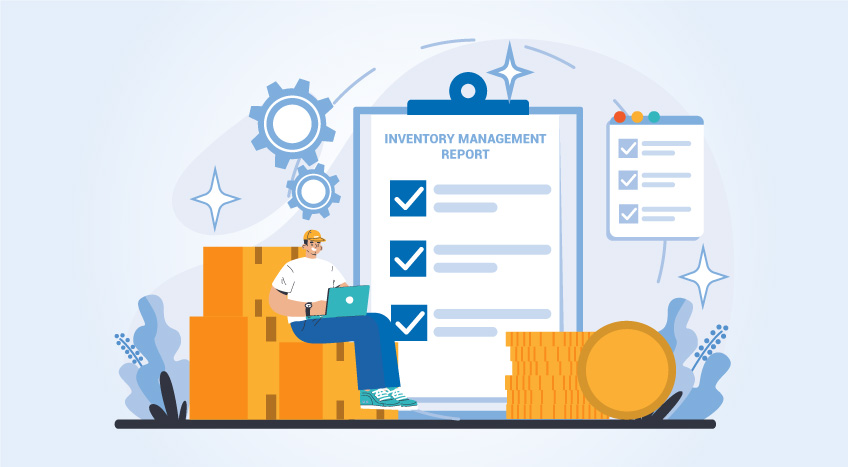- What is a payroll audit?
- What are the main payroll audit objectives?
- How you can perform a payroll audit for your business
- Integrated solution for secure and accurate payroll
Payroll is one of the most critical processes in a business. Employees are more likely to be happy when they are paid accurately and on time. Many small companies delay payroll simply because of delays in processing. Payroll should accurately calculate all employees' salaries and record the bonuses and deductions applied. The deductions made on behalf of the government should then be paid to the authorities. Payroll audits help regularly check the company’s payroll records and identify if their payroll process is lacking. If there are any bottlenecks or inaccurate applications of calculations of taxes and other levies, they should be weeded out. Payroll audits also help detect if there are any payroll malpractices or frauds that are happening. Modern software solutions such as TallyPrime help you process payroll quickly and easily. It also helps generate the required tax filing reports for hassle-free tax filings.
|
Benefits of Payroll Management Software for Small Businesses in USA |
What is a payroll audit?
Payroll audits are verification procedures to ensure that the payroll process and calculations of the company are accurate, complete, and compliant with the law. It is wrong to rely on the employees to point out mistakes in their pay calculations. This is because some employees quickly identify problems with their pay calculations while others may not notice for years. The responsibility for accurate payroll rests with the employer, not the employee. Incorrect payroll calculations may also lead to legal troubles because of inaccuracies in the calculation and filing of taxes and other payments to the government authorities.
The process of auditing payroll can be quick in a smaller company and take longer in a large company with numerous employees. Many payroll checks can be automated when you use TallyPrime to manage your payroll. However, regular payroll audits are essential to catch errors such as wrong attendance or wage rate entry. In most companies, the Human Resources (HR) department is also involved in payroll auditing alongside the payroll department. This is essential to avoid errors between the commitment that HR has made to an employee and the payroll details that the payroll department understands.
The lack of communication between HR and payroll may be the cause for many issues that are revealed by a payroll audit. HR is also involved in any bonuses, benefits, or promotional incentives that may be offered to the employee. Since payroll is a sensitive issue, errors should be dealt with carefully and with all the related departments involved. The company must ensure that both the payroll and HR departments are in sync when changes are made to an employee’s salary.
The payroll department is involved with the payroll data daily. Looking at the payroll with fresh eyes may help identify issues that may not be obvious otherwise. This is another reason in favor of the HR department being involved in the payroll audit.
Payroll audits should focus on two goals. This first check is to verify the payroll's completeness, accuracy, and compliance. The second is to verify if the internal controls and procedures of the company have been effective in preventing errors and issues.
Payroll audits should be performed at least annually. It can be performed by the company's staff or outsourced to an accounting firm. Payroll audits are helpful for companies of all sizes as payroll fraud is more commonly found in smaller businesses. Since payroll is one of a company's most significant expenses, it is a good practice to ensure that it is accurate and that the company is not being defrauded through payroll fraud.
What are the main payroll audit objectives?
Payroll aims to compensate workers for their work accurately and on time. A payroll audit verifies if the company’s payroll process is satisfying the payroll objective. Some of the most common objectives of the payroll audit checklist are as follows:
Tax reporting accuracy: Calculating and reporting taxes correctly for payroll is essential to avoid penalties and actions by the authorities. The US tax system requires that employees fill out a tax form for the tax deduction calculations. The company's payroll system should match the instructions each employee gives. Additionally, other state and regional laws may exist for other deductions and calculations. The tax deductions for employees who work from home are far different from those who work from the office. A payroll audit verifies if the company is recording these parameters of each employee correctly and then using them to calculate the taxes applicable accurately. The tax information filed with the authorities may also be verified for accuracy.
Ensure compliance: A payroll audit checks for compliance with employment laws and other relevant regulations in the state and locality of the company. Aspects of payroll such as overtime, tip credit, insurance, health savings, retirement, and other items are verified and checked for accuracy of entry and calculation. In addition to verifying if the company is deducting the right amount, the audit checks if the held amount is deposited wholly and accurately. If the employee’s payroll is subject to a garnishment ordered by the court, that amount should be paid to the designated person or institution correctly. Instead of issues with the authorities, companies should conduct payroll audits to always comply with their taxes and other payments.
Accurate pay information for workers: The law mandates that all employees be informed of their payroll calculations and payment data. The pay stub is a slip or document provided to the employee, usually when making a salary payment. It tells the employee how many hours they have worked, their wages, bonuses, and deductions. Some companies also provide leave data on the paystub. The employee should be given tax documents for their tax filings every year, and if there are any issues or errors, they should notify the company. Regular payroll audits to ensure that such errors do not happen.
Detection of errors and inaccuracies: Payroll fraud is a common method by which the company is cheated of its money through the payroll system. When there are no payroll audits, some unscrupulous people who have access to the payroll system may create false employee profiles through which they collect wages for work they have not done. There may also be corruption within the system where staff members collude with miscreants and alter employees' time sheets to get paid for more work than they have done. Employees who have left the company may still be on the payroll records and receive salary after terminating their employment. Something as simple as a typo can completely alter a person’s salary. Such errors, unreported, can cause the company a huge loss of money.
How you can perform a payroll audit for your business
The process of payroll audits is usually challenging when you start out. However, each recurrent cycle of the payroll audit checklist should be able to highlight areas for improvement.
- Verify the employee list, pay rates, and hours worked
Payroll fraud is an all too common problem in big and small companies. Ghost employees are non-existent people who have been entered into the system and draw a salary without working in the company. These ghost employees are often added by employees who have access to the payroll system and add their bank accounts under the guise of fake employees to collect salaries. Sometimes, these ghost accounts are in the name of a former employee, unaware that their name and profile are being used illegally to steal money. So, the first step on a payroll audit checklist is verifying every employee on the company’s payroll list. This is easy when you use payroll software.
- Verify pay rates and hours worked
Pay rates and timesheets can be fraudulently manipulated to pay employees more than they have rightfully earned. Some employees can manipulate these payroll records with the cooperation of the payroll management employees. Payroll audits must verify if the wage rate for every employee is entered and calculated as it should be. The Involvement of HR in this process ensures that each employee is paid precisely as per the offer made to them by HR. When there is no biometric attendance system, the time sheets must also be verified to see if any employee has been marked as working more hours than they have. Some errors may be intentional, while others may result from a typo. Regular audits also act as a preventive measure for employees contemplating such payroll fraud.
- Verify variable payments: Some companies pay out variable payments based on company policies. Some variable payments could be bonuses, awards, commissions, shift differentials, or profit-sharing. These payments motivate employees to do more and perform better. But, certain employees could misuse the system to get paid more than sanctioned. Regular payroll audits that verify variable payment rates prevent such malpractices.
- Scrutinize off-cycle payroll
There will be 12 payroll cycles when payroll is processed every month. But when the payroll cycle is different, it may be possible for the department to intentionally or inadvertently run payroll more times than necessary and disburse more money than they should. Such extra payroll runs are called ‘off-cycle periods’ and must be investigated.
- Payroll reconciliation
Payroll payments reflect in accounting ledgers. Payroll reconciliation is the cross-verification of the payroll details with the accounting records. To see if the payroll amounts have been correctly entered in all the relevant books of accounts. This is not an issue when the company uses an integrated software solution such as TallyPrime. But if the payroll and accounts are manually maintained or use different software, errors may creep in when the data must be reentered into the different software. A payroll reconciliation must be performed for every payroll processing.
- Reconcile internal payroll records with tax forms
After ensuring that the internal payroll records of the company are accurate, the information must be verified with the reported numbers and information on the 940 and 941 employment tax forms filed annually and quarterly. If there are state-level versions of these tax forms, they must be verified too.
- Search for outstanding tax liabilities
Check the records to verify if the company has any outstanding tax payments that have not been made. Tax payments must be processed on time and paid to the authorities punctually. In some cases, such as an employee who has moved out of state, there may be a delayed payment while you wait for the employee to get their new state tax ID number. These payments should be processed as soon as possible to prevent issues later.
- Identify areas for improvement in the payroll process
Every succeeding payroll audit should become more manageable if the company takes action on issues detected in each audit. If there is no improvement, the payroll process needs an overhaul and better internal controls to prevent payroll issues. Some of the most common areas for improvement are:
Timesheets: Timesheets approval by a supervisor and submission to payroll should be on time. When timesheet submission is delayed, it can cause delays and issues in the payroll process. Bonuses: Any commitment to variable pay and bonuses should specify the amount and time of payment in writing with authorization.
Security of payroll records: Access to payroll records should be restricted to authorized people. Software such as TallyPrime offers high levels of security and audit trail features that secure your payroll records from fraud attempts.
- Ensure compliance
At every step of the payroll audit, the company’s payroll should be verified for compliance with local, state, and national laws, rules, and regulations. The federal Department of Labor and state labor department websites are the best source of information on the laws. These websites will also display the latest announcements and changes to the policy if any.
Integrated solution for secure and accurate payroll
Payroll audits are easier and find fewer issues when the company has an intelligently designed payroll system such as TallyPrime. TallyPrime has proven internal checks and balances that prevent most payroll issues. The integrated design ensures that all the books of accounts are correctly updated. TallyPrime is secure and has strict and detailed access controls that do not allow unauthorized people to access payroll. Its audit trail features help track changes to the system, if any. TallyPrime is the best solution for all your payroll needs!
Read More:










